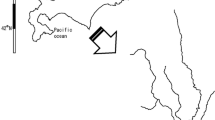Abstract
Sperm characteristics and fertilization success were measured in two groups of Manx autumn-spawning herring, Clupea harengus L., captured 1 wk apart. Samples contained motile sperm for up to 45 min after activation (average 7 min). Individual spermatozoa were motile for up to 5 min. The activation of individual spermatozoa is probably phased, although the mechanism for the delay is not clear. This can account for the overall low levels of active sperm at any one time, the periodic fluctuations observed in the proportion of motile sperm, and for successful fertilization rates achieved using samples of apparently immotile sperm. The proportion of motile sperm was not affected by the presence of eggs, but the duration of motility was longer when sperm was activated in the presence of eggs rather than in seawater alone. Individual males differed significantly in the duration of motility in their sperm samples and in the fertilization rates achieved, but not in the proportion of motile sperm in each sample. There were no consistent changes in the characteristics of the spawners or the sperm between the two sample dates. Sperm motility and duration of motility were significantly correlated, but none of the sperm characteristics measured was significantly related to fertilization success.
Similar content being viewed by others
Author information
Authors and Affiliations
Additional information
Received: 13 March 1999 / Accepted: 20 May 1999
Rights and permissions
About this article
Cite this article
Geffen, A. Variations in sperm motility of the Atlantic herring Clupea harengus. Marine Biology 134, 637–643 (1999). https://doi.org/10.1007/s002270050579
Issue Date:
DOI: https://doi.org/10.1007/s002270050579




